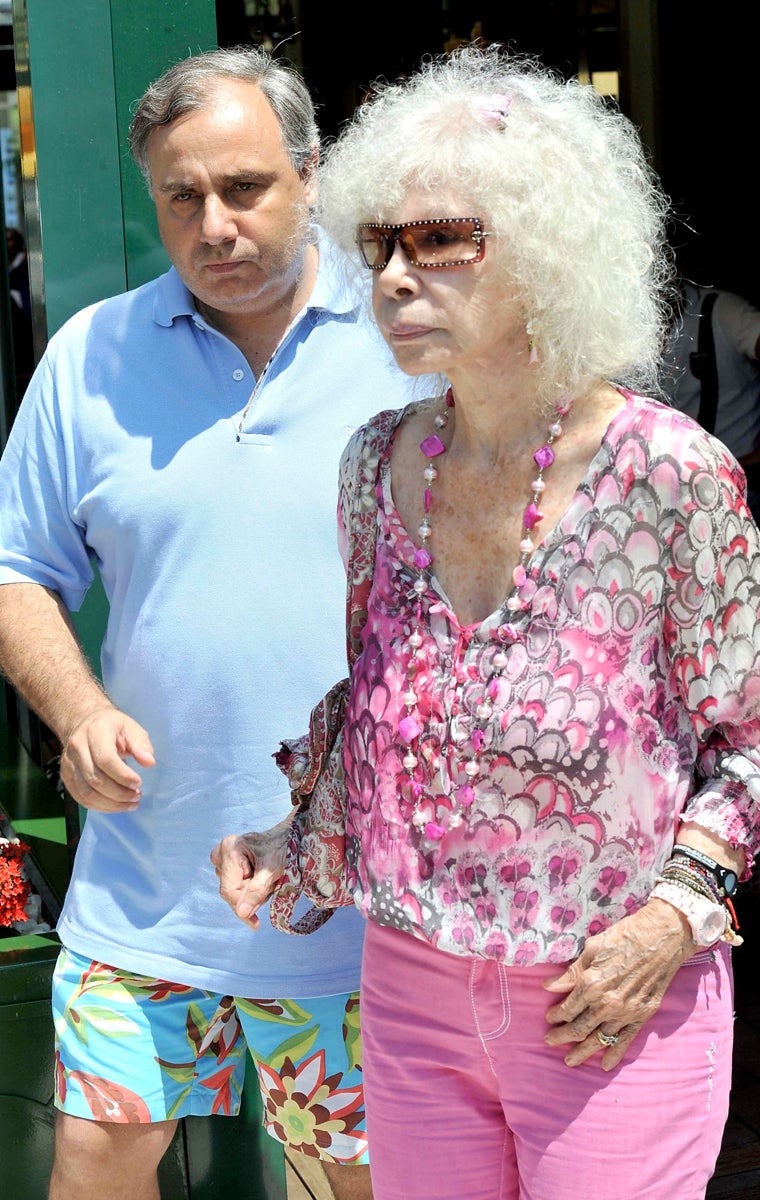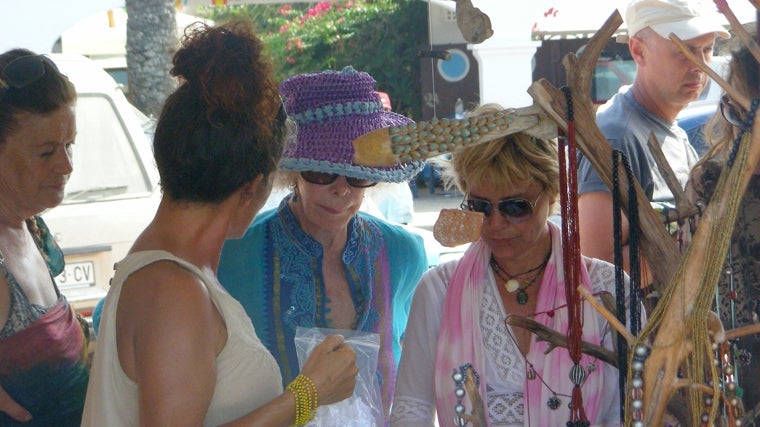The summer secrets of the House of Alba: From the beaches of Ibiza to literary gatherings in Extremadura

Every summer, the House of Alba's holidays are a blend of history, tradition, and luxury that have forged the aura of Spain's most emblematic aristocratic family. From Cayetana Fitz-James Stuart, the unique 18th Duchess of Alba, to her six children and the current generation, the holidays have always been a time of reunions, festivities, and escapes marked by the palaces, estates, and vast family heritage. Cayetana, known for her indomitable spirit and love of Andalusia, would escape in the summer to the Palacio de Las Dueñas in Seville , witness to many flamenco evenings.
She also visited the nearby Las Arroyuelas estate, where, away from the cameras, she indulged her passion for horses. It is said that she even rode in heels, an eccentricity that marked her unconventional nature. Furthermore, the La Pizana estate, near Córdoba, was another refuge where she spent time surrounded by olive trees. There she would retreat with her children and participate in activities that broke with protocol, such as picking olives or preparing gazpacho with her family .
In Marbella, she had a beachfront house, Las Cañas, where she enjoyed the sea views and sunsets . Sitting on the couch in that privileged spot, she recounted spending 'the most pleasant moments of my life'. In Ibiza, she also had the Mediterranean at her feet, thanks to S'Aufabaguera (in Ibizan, it would be 'The Basil'), a modern and bohemian resort. But when the heat was too much, the Duchess moved to San Sebastián, where she had the 20,000-square-meter Abaizenea Palace.
Of her six children, the eldest son, Carlos Fitz-James Stuart, the current Duke of Alba, has maintained a respect for tradition, but with a much more discreet profile than his mother. He spends his summers between La Pizana and some stays in Mallorca, where he enjoys nature at a leisurely pace. Carlos is known for his morning horseback rides and his love of reading , a habit he continues on vacation. Unlike his mother, he prefers to stay in modest houses on the estates, away from the grand palaces, for a simpler, more family-oriented summer.
 gtres
gtres
Alfonso Martínez de Irujo, Duke of Aliaga and second son, was a regular in Marbella during the 1980s and 1990s, where he was seen attending regattas and nautical events. His passion for the sea led him to organize several charity regattas in Sotogrande, and it was not unusual for his summers to include a stay at the marina, where he could spend hours among boats and friends. His personal life, marked by media connections, was often reflected in his vacations, which were sometimes punctuated by encounters with artists and international jet set figures.
Jacobo Fitz-James Stuart, Count of Siruela, has always had a more intellectual summer. Founder of the Atalanta publishing house, he preferred Extremadura to unwind . On his 4,000-hectare estate in Malpartida, surrounded by holm oaks and the quiet nature of Cáceres, he organized meetings with writers and poets. Anecdotes are told of his summer gatherings where literature and wine took center stage, and where he would often joke about the nobility and their eccentricities, displaying a less solemn sense of humor than expected. With his wife, Inka Martí, he alternates the countryside with his farmhouse in Villaür, in the Alto Ampurdán (Girona).
Fernando Martínez de Irujo, Marquis of San Vicente del Barco, has always been less well-known but highly respected within his family. His vacations have revolved around religious life and family traditions. He is known to have particularly enjoyed the pilgrimages and local processions . He has inherited Las Cañas, in Marbella, where he joins his daughters, María Mercedes and María Sofía, as well as his siblings and cousins.
 gtres
gtres
Cayetano Martínez de Irujo, Olympic rider and the most media-friendly after Carlos, combined his love of equestrian competition with parties and getaways to trendy spots in the summer. In Ibiza, he was frequently seen at private parties, but also in more intimate moments at his estate in Sanlúcar de Barrameda, where he is remembered organizing barbecues. His relationship with his mother was intense and complicated, but in the summer they often shared horseback rides or visits to Andalusian bullrings . Now he divides his holidays between Carmona (his Las Arroyuelas estate, known as the "flagship of the agricultural heritage" of the House of Alba, covers 1,400 hectares), Bujalance (El Hierro), and the Abaizenea Palace in San Sebastián.
Eugenia Martínez de Irujo, the youngest daughter of the Duchess of Montoro, has led a summer lifestyle that blends glamour and simplicity. Known for her open and cheerful personality, her summers in Marbella or at the family estate in Jaén were famous for the presence of friends from the worlds of music and art. In the 1990s, her marriage to Fran Rivera made their vacations a media focus, with covers and reports on their destinations. Today, far removed from the gossip world, she enjoys cultural trips to Paris and Florence with her daughter Cayetana and her husband. She has inherited S'Aufabaguera, her Ibizan residence, which she combines with stays at her La Pizana estate, surrounded by wheat fields and olive groves.
 gtres
gtres
In the next generation, Fernando Fitz-James Stuart, Duke of Huéscar, son of Carlos, has opted for a more discreet and family-oriented summer. Married to Sofía Palazuelo, they often spend their holidays in Mallorca or La Pizana , trying to give their daughters a childhood away from the press. One of their traditions is an afternoon stroll through the Las Dueñas gardens, where the Duke recalls stories told by his mother and great-grandmother. Fernando has inherited Stuart's love of poetry and literature, and often organizes small private readings for friends and family in the summer.
ABC.es





